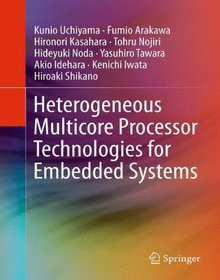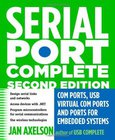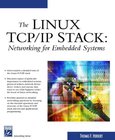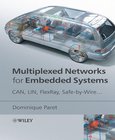Heterogeneous Multicore Processor Technologies for Embedded Systems

Book Details:
| Publisher: | Springer |
| Series: | Springer , Embedded |
| Author: | Kunio Uchiyama |
| Edition: | 1 |
| ISBN-10: | 1461402832 |
| ISBN-13: | 9781461402831 |
| Pages: | 224 |
| Published: | Apr 21 2012 |
| Posted: | Jul 15 2016 |
| Language: | English |
| Book format: | |
| Book size: | 7.18 MB |
Book Description:
To satisfy the higher requirements of digitally converged embedded systems, this book describes heterogeneous multicore technology that uses various kinds of low-power embedded processor cores on a single chip. With this technology, heterogeneous parallelism can be implemented on an SoC, and greater flexibility and superior performance per watt can then be achieved. This book defines the heterogeneous multicore architecture and explains in detail several embedded processor cores including CPU cores and special-purpose processor cores that achieve highly arithmetic-level parallelism. The authors developed three multicore chips (called RP-1, RP-2, and RP-X) according to the defined architecture with the introduced processor cores. The chip implementations, software environments, and applications running on the chips are also explained in the book.Provides readers an overview and practical discussion of heterogeneous multicore technologies from both a hardware and software point of view;Discusses a new, high-performance and energy efficient approach to designing SoCs for digitally converged, embedded systems;Covers hardware issues such as architecture and chip implementation, as well as software issues such as compilers, operating systems, and application programs;Describes three chips developed according to the defined heterogeneous multicore architecture, including chip implementations, software environments, and working applications.
Download Link:
Related Books:
Serial Port Complete
COM Ports, USB Virtual COM Ports, and Ports for Embedded Systems
2nd Edition
PC COM ports, USB virtual COM ports, and ports in embedded systems are all addressed in this updated guide to programming, interfacing, and using serial ports. Topics include using .NET's SerialPort class for COM-port communications on PCs; upgrading existing RS-232 designs to USB or wireless networks; and creating serial networks of embedded systems and PCs. Example circuits and code provide a quick start to projects. Installation and maintenance staff will also find tips for ensuring reliable operation and problem tracking....
The Linux TCP/IP Stack
Networking for Embedded Systems
The Linux TCP/IP Stack: Networking for Embedded Systems provides an in-depth guide to implementing and using the Linux TCP/IP stack in embedded systems projects. It begins with a general overview of TCP/IP networking, with background information on applicable networking standards. From there, it details the TCP/IP implementation in Linux 2.6 by following a packet of data as it flows through the stack from the sending system, out the wire, and back through the input side of the stack in the receiving machine. This unique approach gives programmers an "inside" look at the entire process. Throughout the text, topics of particular interest to engineers implementing embedded systems are discussed, such as sockets, network interfaces, application...
Multiplexed Networks for Embedded Systems
CAN, LIN, FlexRay, Safe-by-Wire
Multiplexed networks are essential for the unified, efficient and cost-effective exchange of electronic information within embedded component systems. This is especially important in automotive manufacturing as vehicles become increasingly reliant on robust electronic networks and systems for improved reliability, anti-lock brake systems (ABS), steering, on-board navigation systems, and much more. The latest systems such as X-by-Wire and FlexRay aim to produce faster, fault-tolerant network component interconnects, for state-of-the-art network implementation and safer, more reliable engineering of vehicular systems. This book provides a thorough and comprehensive introduction to automotive multiplexed network buses, covering the technical principles,...
2007 - 2021 © eBooks-IT.org



